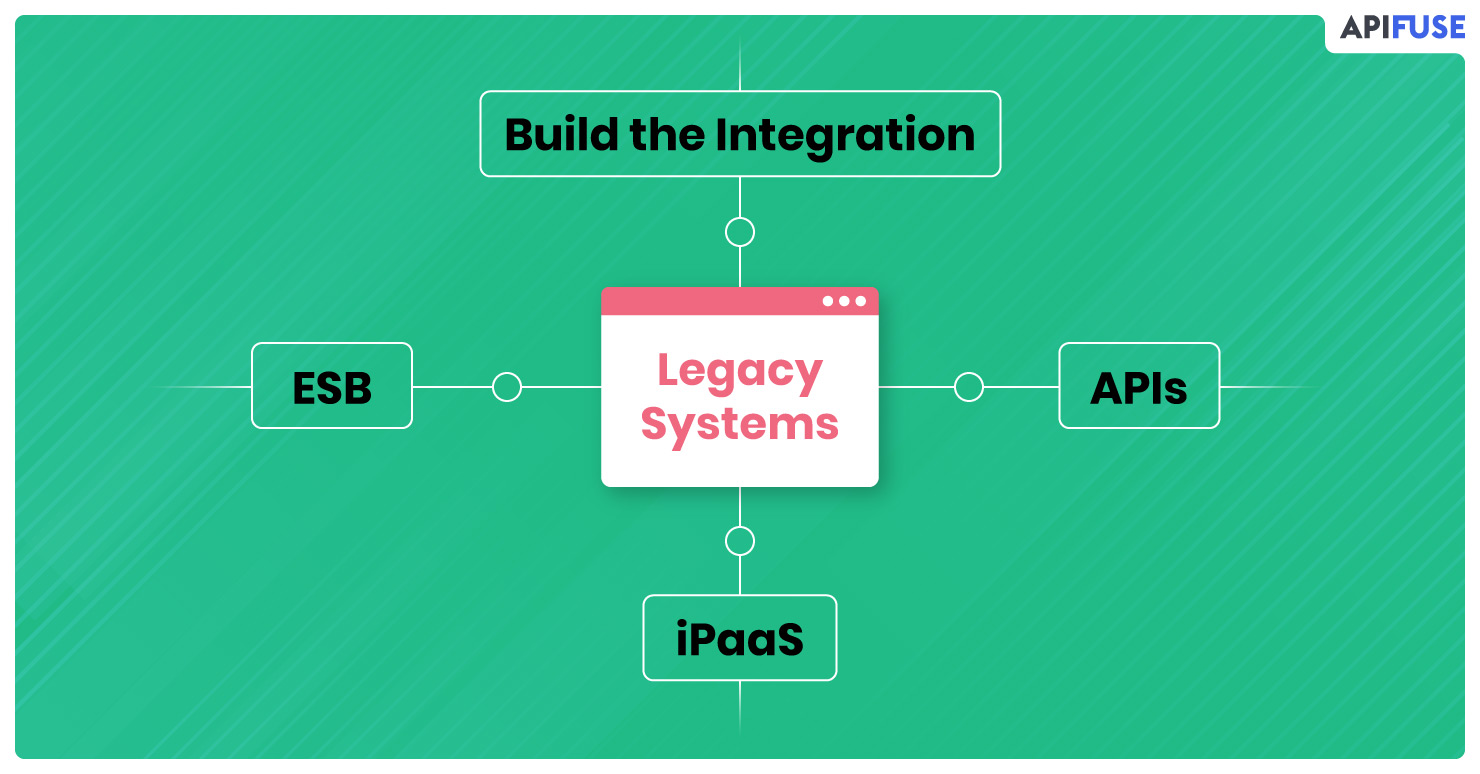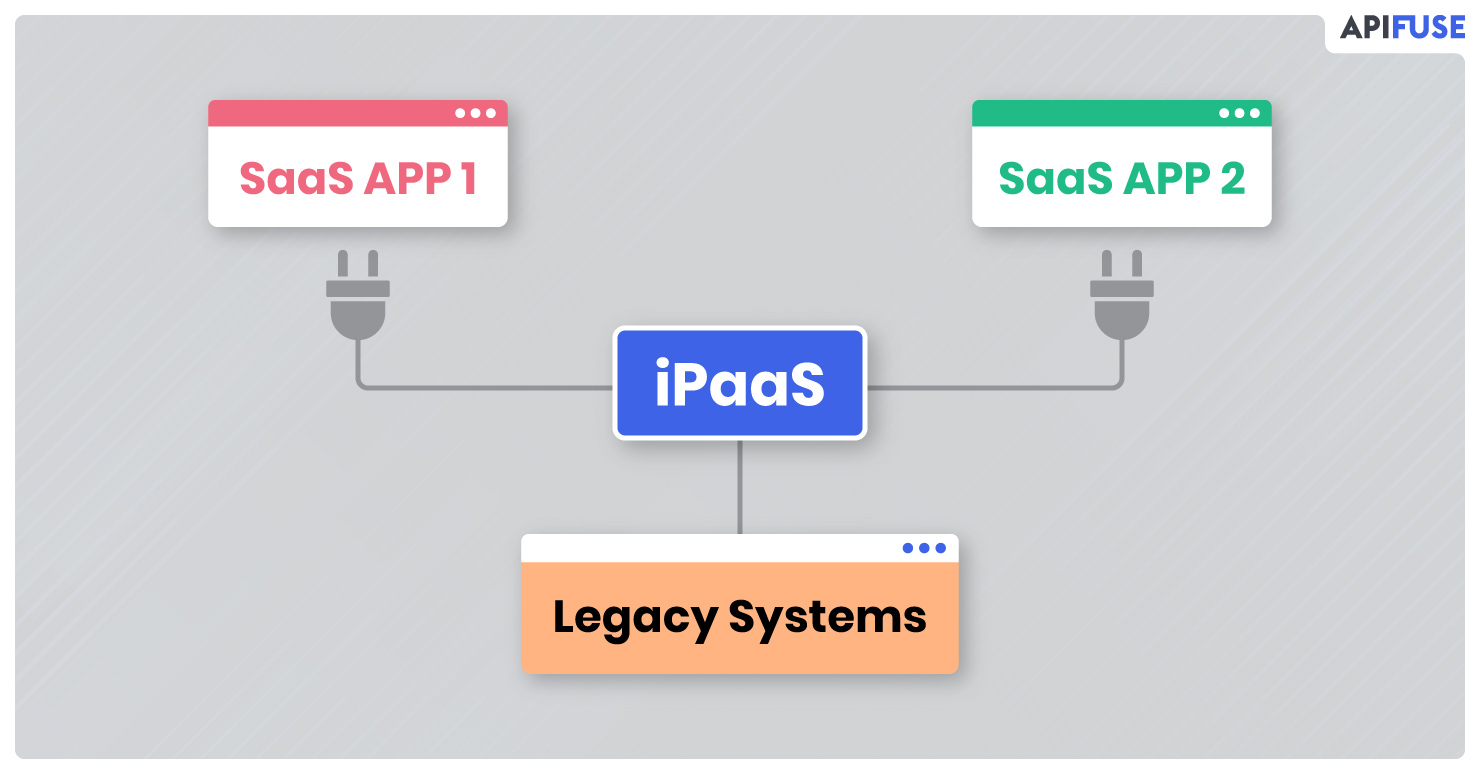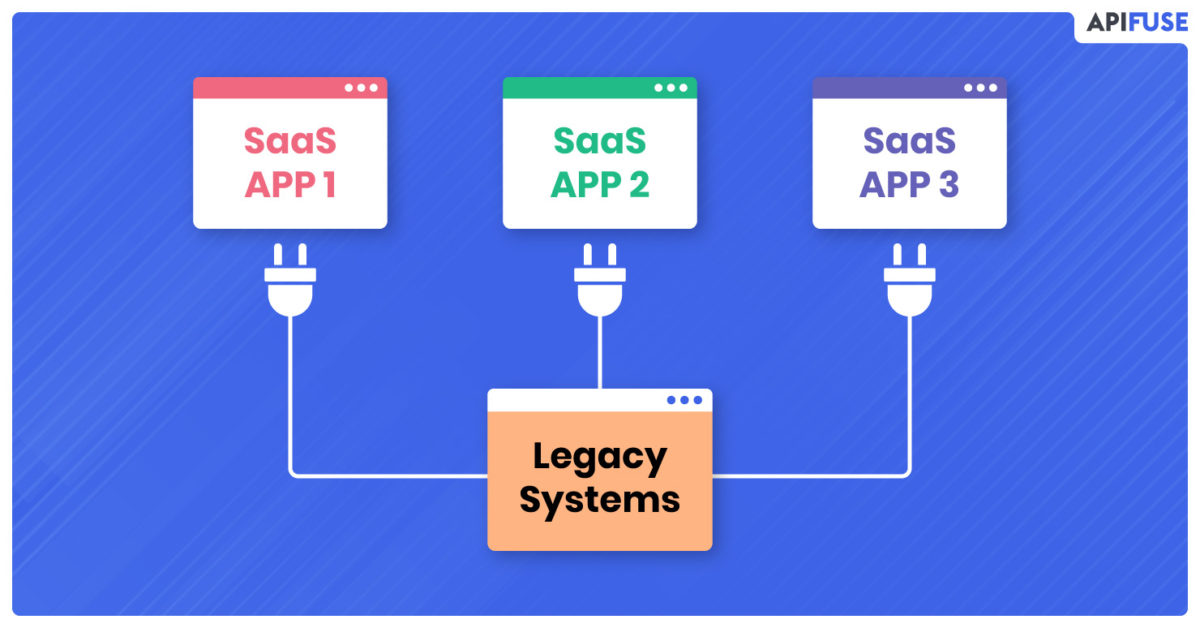For better or worse, legacy systems are here to stay, but every savvy organization and enterprise realizes an increasing need to integrate them with cloud or on-premise applications. Without the newer SaaS platforms, businesses will not thrive.
This begs the question, “how to integrate SaaS applications with legacy systems?”
The short answer is – an integration platform.
What are Legacy Systems?
Any old technology that enterprises use, like a database, ERP, or SCM, is a legacy system. Such technology has a long lifespan, and that’s why even though they were built in the early 2000s or before, they are still plodding on.
These systems run their core processes on mainframes, which makes them complicated and fragile. Even their data standards, which are generally in-house, are outdated. It was the emergence of new technology like SaaS that made legacy systems obsolete.
However, it is worth pointing out that it is not merely age that slaps the “legacy” nametag on a system. Sometimes even a three- or four-year-old system can fall into the category just because it now fails to meet the requirements of the modern-day business. Or it lacks scalability or has poor architecture.

The trouble with legacy systems is that they have one too many issues. They’re rarely compatible with new technology. They may not have robust security support. They are often isolated from your tech ecosystem because integrating them with cloud services is not an easy ask.
As per a report by Accenture, “44% of financial services firms named difficulty integrating new technology with legacy systems.”
That said, for a lot of enterprises, legacy systems are the bread and butter. They help operate daily tasks. Besides, replacing legacy systems is a herculean task. So, even if you want to modernize, you can just rip legacy software off like a band-aid and substitute them with the latest technology. It takes time, extensive effort, and capital.
So, when you can’t do away with them, there is only one choice left, integrate them with SaaS software. But that too poses a lot of unique challenges.
What are the challenges of integrating SaaS with legacy systems?

The trouble with integrating SaaS applications with legacy systems occurs in three tiers. The first of which is the problems associated with legacy technology:
- They run on old hardware; maintaining or upgrading it is expensive.
- The necessary documentation for system or architecture change is missing, making expansion demanding.
- The systems tend to have vulnerabilities, which pose the risk of being compromised.
- They necessitate knowledge of old code, i.e., programming languages like COBOL.
Point-to-point integration with SaaS applications doesn’t work if there are too many integrations.
The gist of it is the DNA of legacy systems makes SaaS application integration a difficult task. It hardly takes much to break things and leave them worse than before.
The second tier of problems comes from the sheer number of SaaS offerings available in the market. It compounds the mess that is legacy system integration. There are too many tools businesses rely on, and customers demand. Each is unique and has a different interface.
This necessitates custom code to connect the legacy system with every 3rd party application your enterprise requires. The end result is jumbled-up chaos. And, keep in mind, there is no guarantee that the integrations will work according to your plan or even at all.
The third tier of troubles with integrating SaaS apps to legacy systems comes from the process itself. An organization’s IT ecosystem has multiple components. This architecture, by its very nature, varies with time. When you’re integrating, you have to consider each of them, their location, and their limitations. That’s why designing the integration process isn’t simple.
But not bridging a legacy software to SaaS is not an option. For one, you’ll have to support both the old and new systems simultaneously. For two, you’ll end up with even more data silos. Given that legacy systems already divide data in isolated islands, not integrating further limits your ability to distill actionable insights from your data.
Ways to integrate SaaS applications with legacy systems

The good news is that there are a handful of ways you can connect applications with legacy software. The bad news is that some of them come at a cost to you. The better news is that you can use platforms, inexpensive and quick ones, to achieve SaaS integrations.
The obvious choice: build the integration
Building the integration from scratch is the obvious answer. It not only allows you to have complete control of the integration, but you can also customize it to your needs. That said, creating a legacy system integration is a monumental task.
It takes months and a lot of workforce to code it. On top of it, maintaining the integration is no simple undertaking. Add to that tech ecosystems evolve swiftly; how many integrations do you think will you be able to build and support before you start drowning.
The traditional method: ESB
Enterprise Service Bus or ESB is a set of rules and principles for integrating applications. It is the conventional approach to integrating with legacy systems, which means it is dependent on IT users.
The concept behind the architecture is to bridge various applications by adding a bus between them. The bus enables the communication between the applications without any dependence on the system. Think of ESB as a switchboard that reroutes messages between two points.
But the drawback here is that ESB is an on-premises solution. It’s designed to be the middle layer between the cloud and local data/service. It offers point-to-point integration, which creates technical and infrastructural issues like brittleness and inflexibility.
Moreover, accessing data is not easy with ESB, and it is time-consuming. ESB also can’t hold volumes of data at any given time. Any transformation the data can undergo is minor. Also, you cannot monitor the integrations from a central hub.
Lastly, ESB only allows integration within the existing architecture of your on-site or internal systems.
The newer approach: using APIs
Application programming interfaces or APIs expose the data in the legacy system in a way that protects the integrity of it and governs access to it. But using APIs to integrate SaaS platforms with legacy systems requires developers.
Although the financial investment is not too heavy, it does take considerable time to build APIs. Besides being time-consuming and not to say brutal, designing APIs from scratch also makes you responsible for the changes. It’s your job to tweak the bridge at your end when the API changes to make sure that it keeps working.
All in all, none of the three approaches are effortless or straightforward. They need expertise, time, and money.
Luckily, there is a fourth, easier, and more efficient method to integrate SaaS applications with legacy software.
The easiest way: iPaaS

iPaaS or an integration Platform as a Service is packed with benefits when it comes to integrating with a legacy system. Such platforms have an array of pre-configured adapters and connectors. The pre-built connectors make it easy to integrate applications with any of the typical legacy systems.
The time and effort on your part are nil. You don’t have to hand-code the integration, which means you can configure a SaaS application in a couple of hours. If the platform doesn’t already have a connector for an application, the no-code API creation tool makes it easy to build one.
You don’t even have to maintain the integration. The iPaaS does it for you. In short, the agility and adaptability iPaaS offers simply cannot compare to the other approaches of integrating with legacy systems.
The most significant advantage of iPaaS is that it utilizes a hybrid environment, so it addresses the most common integration challenge – connecting on-premise systems with cloud-based apps.
When you use an integration platform, your business operations are not disrupted. Further, any data extraction is reliable and completely secure because iPaaS has robust governance features such as metadata management, data profiling, and data quality mechanisms.
If your organizations must adhere to HIPAA, GDPR, SOC2, or CCPA, iPaaS empowers that too. You can even get role-based access control and enterprise authentication tech like OAuth and OpenID connect.
One more challenge with legacy systems integration is adding more and more solutions. iPaaS solves that too. Without putting in labor, time, hardware, or more money, you can scale up or down.
iPaaS can tackle the most complex integrations, be it cloud-to-cloud, on-premise legacy software to cloud apps. Connect to as many cloud-based applications, mobile apps, or IoT devices as your business or customers demand or remove them.
Lastly, they are equipped to work with various formats and endpoints, even the older ones like X12 and EDIFACT. They can automate any underlying business process, as well.
The need to integrate SaaS applications with legacy systems
There is no doubt that legacy systems are not entirely going away. The safety, resilience, and dependability they offer to businesses are unsurpassed. They serve critical business functions and purposes, and it doesn’t make financial sense to get rid of them. But it’s equally true that organizations need modern technologies.
As MuleSoft puts it, “When it comes to modern business requirements, these legacy applications often fall short, as they can be less well-suited to new consumer demands and less able to adapt to rapid change.”
It is why there is a dire need to have a legacy system integration in place so that businesses are free to adopt any new SaaS applications. Of all the approaches, iPaaS is the one that ticks all the boxes. It is cost-effectively, effortless and swift. It’s uniquely equipped to manage all your integration needs in real-time, even with high volumes of data.
API Fuse enables you to offer on-demand integrations so that you can rapidly respond to end user integration requests. With our solution and range of plans, you can provide your customers native or custom integrations embedded directly into your SaaS app in minutes to accelerate your product roadmap and reduce technical debt. To learn more about our embedded integration capabilities, request a demo today for more information!
